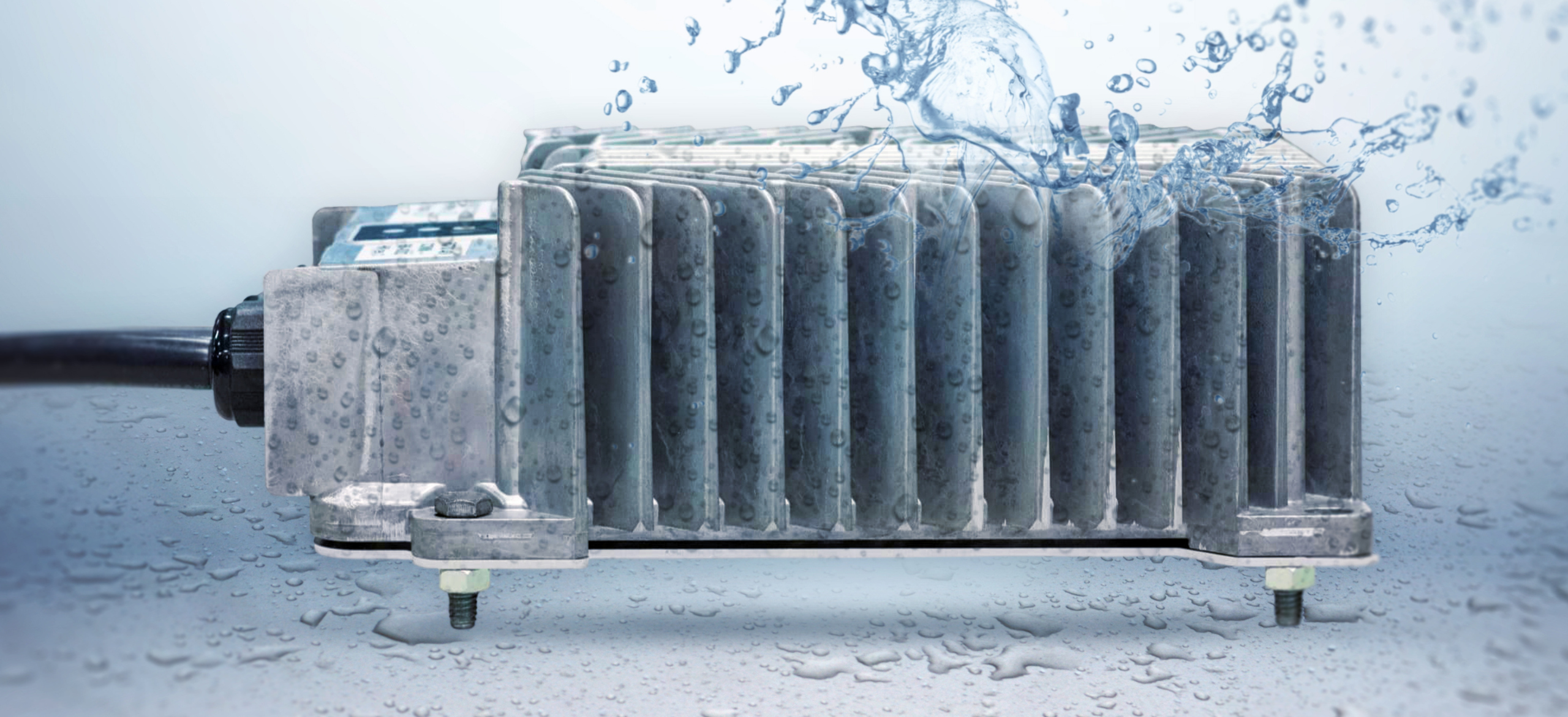Mechanical and Durability Considerations for On-Board Chargers
The work environments and normal operation for non-road mobile machinery (NRMM) often place significant stress on the machines’ complex systems and components, including on-board chargers. This stress may cause damage, loosen electrical connections, and affect operation.
Therefore, original equipment manufacturers (OEMs) must ensure they adequately engineer and protect on-board chargers to deliver the performance that operators and fleet managers rely on daily. This article examines some common mechanical stresses on-board chargers experience and the testing procedures that help determine how well they withstand them.
Operating Environments and Conditions Affecting Mechanical Reliability and Durability
On-board chargers will experience mechanical stresses such as impact-related shock and steady or random vibrations. These stresses can cause failure by creating or exacerbating design weak points, particularly over time.
Shock
As the name implies, NRMM often operates on bumpy, uneven terrain, resulting in frequent and substantial impacts or jostling. However, indoor environments and flat-ground (e.g., common lift truck environments) will also cause issues if they aren’t regularly cleaned or cleared of debris. Indoor operations may even experience a greater risk of impact—for example, if a warehouse is stocked to capacity and operators must maneuver around thin aisles and tight corners.
The effects of impact are magnified because NRMM generally features solid tires and no suspension. Therefore, any shock the machine experiences is transferred throughout systems and components with little to no dampening.
Some effects of shock can be lessened by outfitting specific systems and components with localized suspensions (e.g., sprung battery trays). But with available space already at a premium, this isn’t always possible.
Vibrations
As with shock, vibrations can result in damaged components. It also significantly increases the risk of loosened electrical connections or fasteners that secure on-board chargers in place. And some of these vibrations may occur constantly during operation due to motor and pump operation (e.g., electric drive, rotating fans, hydraulics, liquid cooling).
Every NRMM also experiences a unique vibration profile—based on the number and configuration of these systems and components—which exacerbates this challenge. So, OEMs will need to ensure that the on-board chargers they choose for their machines prove robust against vibrations generally and against a given machine’s specific profile.
Drops
While drops should not affect on-board chargers, OEMs that provide off-board chargers for NRMM and other motive applications must protect the devices from fall-related impacts. Off-board chargers are commonly stored on shelving or overhead, and they may be pulled down from these locations (e.g., cables caught and pulled). All sides and corners should be evaluated for their ability to withstand freefall impacts and to determine potential worker safety hazards.
Mechanical and Durability Testing Standards
Dedicated testing based on international standards provides the best means for assessing on-board chargers and their mechanical and electrical components’ durability against common stresses. Tests must subject chargers to extreme conditions to determine expected failure points given regular and severe-duty use.
Some of the most relied upon and respected tests include the International Electrotechnical Commission’s (IEC) 60068 series and GMW3172.
To ensure optimal performance and durability, OEMs must collaborate with partners that evaluate their on-board chargers or other systems and components with these or similar testing standards. Testing results will inform service life expectations and warranty periods.
IEC 60068 Series
The International Electrotechnical Commission developed IEC 60068 as the standard for evaluating electrotechnical devices’ (including chargers) durability in their standard operating environment. The specified testing parameters are based on real-life forces NRMM will experience during operation, with reliability equations determining testing rigor and extent.
The full range of tests comprises nearly 50 individual assessments, but three prove most applicable to on-board chargers:
- IEC 60068-2-6 – On-board systems and components (e.g., motors, pumps) produce sinusoidal vibrations (i.e., having a consistent, harmonic frequency) during operation. This test evaluates whether the device operates normally while being subject to a range of these vibration frequencies and after.
- IEC 60068-2-27 – This test subjects devices to “non-repetitive shocks of standard pulse shapes with peak acceleration and duration” to evaluate their structural integrity and manufacturing quality’s ability to withstand impacts.
- IEC 60068-2-64 – In addition to sinusoidal vibrations, devices may experience stochastic (i.e., random) vibration. This test subjects devices to digitally controlled random vibrations of different frequencies to assess its performance while experiencing these vibrations along with the effects of accumulated stress from them (e.g., mechanical degradation and weakness).
GMW3172 Testing
The GMW3172 standard was developed by General Motors for testing electrical and electronic components designed for automotive applications. With some customization for off-road use (e.g., managing unsprung mass), OEMs and their partners can reliability validate products for:
- Mechanical shock fatigue – GMW3172 testing includes incidents of bumps (e.g., potholes), collisions, closure slams, crushed housing, and freefall impacts.
- Mechanical vibration fatigue – GMW3172 testing subjects devices to random vibrations to determine their effect on performance and structural integrity.
Additional GMW3172 standard tests relating to thermal and humidity regulation should also be conducted to assess charger durability in extreme or fluctuating conditions.
Highly Accelerated Life Testing (HALT) and Quantified Reliability
Highly accelerated life testing (HALT) enables OEMs to further determine devices’ potential service life and weak points by subjecting them to severe duty use cases. Per HALT results and other testing, Delta-Q Technologies’ XV3300 battery charger achieves an eight-year service life.
Based on test performance and statistical analysis, OEMs and their partners can quantify their confidence in the reliability of on-board chargers. For example, Delta-Q Technologies tests its products for 98% reliability under the most severe use cases—demonstrating significantly greater reliability for standard use-cases. With this information, OEMs can more confidently establish charger service life, warranty periods, and expected failure rates.
Trusted Partners Ensure Mechanical Reliability
OEMs exploring or improving electric-drive NRMM need to identify partners who engineer and extensively test their systems and components. Otherwise, their market share and reputation will be impacted when operators and fleet managers see machines struggle to maintain performance in standard work environments or over stated service lives.
When it comes to on-board battery chargers, Delta-Q Technologies is the partner to trust. Leveraging our extensive experience, we design all our products with these conditions in mind. Then, we subject them to rigorous testing according to IEC, GMW3172, and other standards to determine how they hold up under severe-duty use.
Sources:
IEC. IEC 60068-2-6 Sixth Edition. https://webstore.iec.ch/p-preview/info_iec60068-2-6%7Bed6.0%7Den_d.img.pdf
IEC. IEC 60068-2-27 Third Edition. https://webstore.iec.ch/p-preview/info_iec60068-2-27%7Bed3.0%7Den_d.img.pdf
IEC. IEC 60068-2-64 First Edition. https://webstore.iec.ch/p-preview/info_iec60068-2-64%7Bed1.0%7Den_d.img.pdf





